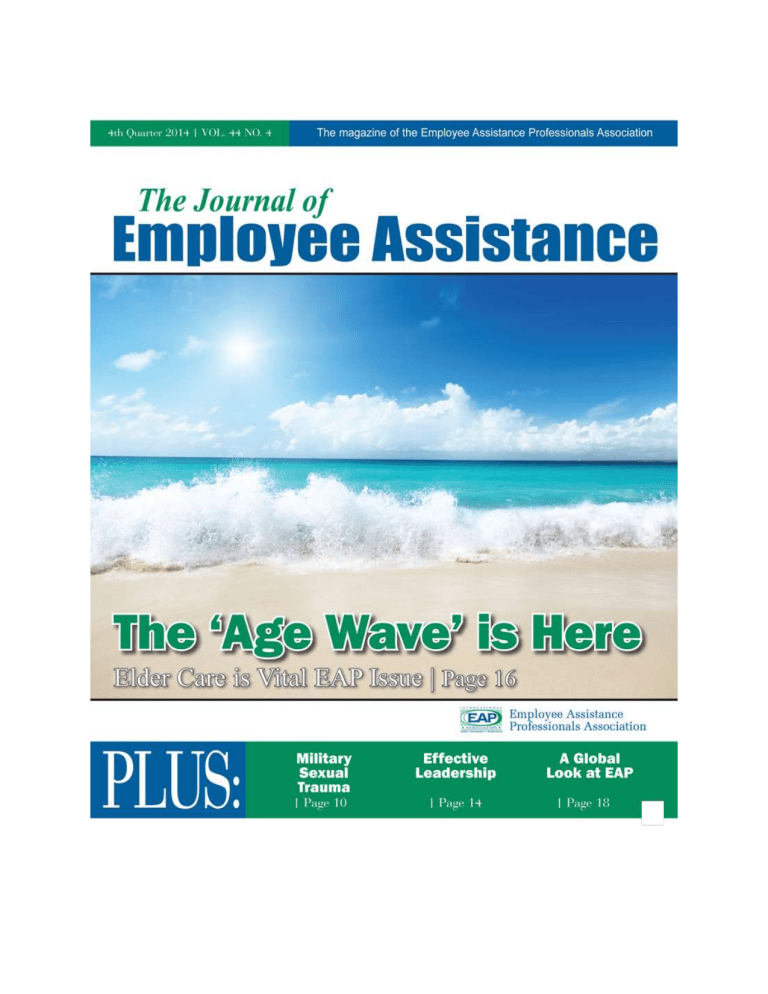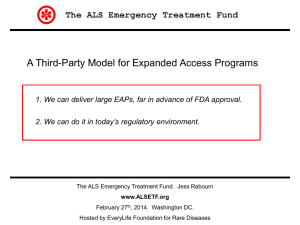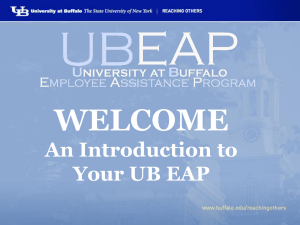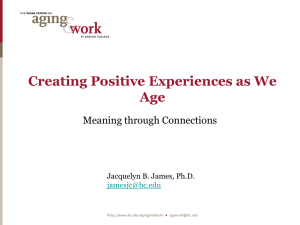The Aging Wave

The ‘Age Wave’ is Here
Aging Parents is Vital EAP Issue
“As the American population ages, employee assistance professionals have an opportunity to become advocates of proactive planning as opposed to simply providing interventions when needed.”
By Barry D. Epstein, J.D.
Our aging parents face enormous challenges struggling to navigate the complicated health care maze.
Their adult children, many in their prime working years, share this struggle regardless of whether they are caregivers. The stress, distractions and demands of helping an aging parent frequently undermine both personal health and job performance. Both employees and employers are important stakeholders in the care of our elders.
Early interventions, particularly planning services, are preferable to “emergencies”, which arise largely because families do not adequately discuss and plan for issues related to aging. As the American population ages, employee assistance professionals have an opportunity to become advocates of proactive planning as opposed to simply providing interventions when needed. In other words, the challenges of aging parents are inviting early EAP interventions . More specifically:
* What should be the role of EAPs as the need for proactive planning increases?
* How can EAPs and their employer clients help increase job performance and return on investment while workers struggle in their relationships with aging parents?
Unique Aspects of the ‘Age Wave’
Renowned aging theorist, Ken Dychtwald, Ph.D. has studied the effects of the aging population, the “Age
Wave”, on not only consumers and markets but also on families, elder care, and the health care system.
Dychtwald’s 2010 study for Genworth Financial found the “vast majority of families have not had a comprehensive discussion regarding long term care.” From my hands-on experience I know this is still the situation today. His study includes findings that EAPs should take into account:
1. Most elders prefer and are receiving long-term care at home ;
2. The vast majority (80%) of home care is by unpaid caregivers;
3. Families significantly underestimate the financial and emotional demands of caregiving; and
4. Even though two-thirds of the population will require caregiving assistance, a minority (35%) of those surveyed believed they would.
Adapt or Perish
EAP providers regularly face the challenges of employer clients torn between their desires to support staff embroiled in elder care issues with their need to protect the bottom line. There is a potential win-win strategy here.
In his book, Marketing to Leading-Edge Baby Boomers (2003), Brent Green cautions that industries that ignore these types of seismic demographic shifts and their sociological context will suffer lost market opportunities. In recent years I have noted that several major industry players have shifted their focus to begin offering different elder care solutions than what they provided previously.
For example, Morgan Stanley recently announced a strategic partnership with a medical case management firm due to the fact that their brokers do not have the expertise to properly handle key elder care issues. A number of major banks and trust companies are now offering “holistic” wealth management strategies that include elder care service referrals.
In addition, many long-term care providers have created call centers to respond to families struggling with elder care challenges. The “take-away” for EAP is that if EA professionals do not assume a leadership role in addressing these challenges, another industry will.
Proactive interventions and provider collaboration in senior care solutions can offer significant costsaving opportunities for families and employers alike. However, waiting to discuss care options and preferences until a parent falls or is diagnosed with a terminal disease triggers emergency-based decisions that, over time, are less effective and more expensive. This is also a result of the myth that remaining in one’s home is always a senior’s best option. This myth fosters “volunteer” spousal and/or family caregiving without adequate, objective evaluation. My own family made this same misstep relative to my mother’s disease path as she declined due to the ravages of Alzheimer’s and Parkinson’s.
A survey of various EAP websites reveals an industry dilemma about which specific solutions for elder care issues should be offered. The minimal end of the spectrum, such as a senior resource list, is tempting given elder care complexities, but it also may represent lost opportunities for more impactful interventions with a better ROI. Resource lists and countless Internet sites without qualitative assessments often leave families intimidated and confused. Alternatively, full-service offerings raise equally compelling issues for companies:
* What are the provider screening criteria?
* Who created it and what is their level of expertise?
* What are or should be the credentials of the “specialists” who assist the employee?
* What ethical dilemmas arise when the referring EA professional faces conflicts between the interests of the employee, employee’s parents, and the employer?
If an employee is understandably preoccupied with or committed to the care of an aging and ailing parent, a certain degree of absenteeism, presenteeism (employees distracted at work), and leave of absence requests are predictable. This can strain performance and a sound employer/employee relationship. EAPs can assume a leadership role by working side-by-side with managers to jointly solve this problem.
Caring for Aging Parents and Impact on the Workforce
The 2013 World EAP Conference included a presentation on “Caring for Aging Parents and Impact on the Workforce.” The co-presenters were Nina Cohn, Senior Vice President for Sunrise Senior Living and
Sharon O’Brien, Senior Vice President for Ceridian. Cohn explained that the tsunami-like “age wave” that is engulfing employers and employees alike is not just an American phenomenon, it also exists in
Canada and Europe. This is due to demographic factors that date back to World War II and its corresponding impact on subsequent birth rates.
However, there appears to be less EAP demand for aging-related issues outside of these nations, due largely to cultural differences. Simply stated, these societies have a more firmly imbedded extended family support system. In addition, EAP is not yet a fully developed concept in some countries and cultures.
Despite growing awareness of the age wave and its consequences, even innovative companies like
Sunrise and Ceridian acknowledge there is a long way to go in closing the gap between need and EAP utilization. O’Brien acknowledges that “it is the human condition to be reactive and wait.” Cohn similarly laments that there is a “dearth of elder care option awareness” specifically and even “extremely limited awareness of EAP generally.”
I believe the solution is both simple and complex at the same time… that is, raise employee awareness through EAP-driven initiatives with a corresponding “permission” by employers to seek assistance free of stigma before workplace performance suffers.
The following are some best practices for EAPs to consider implementing:
• Include parental elder care and planning as an employee wellness or work/life balance issue within an
EAP’s influence. This is an area where employers should want high utilization rates.
• Adopt proactive educational programs and interventions for employers and employees beyond traditional referrals. (Savvy Aging is among the organizations that employs a facilitation process to identify issues and help create an action plan.)
• Evaluate service offerings with equal attention to quality management and return on investment by outside program assessment and future specific utilization tracking.
• Include a holistic approach to the aging maze by partnering with health insurance carriers, clients and providers to increase both program effectiveness and ROI. Employee follow ups to gauge participation and their perception of referral value is important.
Summary
Preventative resources are already standard practice in many areas, and aging is no different. It’s true that decline of a loved one’s health, disease, dementia and family dysfunction are topics we understandably try to avoid.
However, as in most areas of business and life itself, I’ve found that reflection, discussion and planning eases the journey. To provide greatest value to your employer and employee clients I urge readers to explore and implement novel ways to promote proactive elder care solutions.
Barry D. Epstein is the President of Savvy Aging (www.savvyaging.com). He is a nationally recognized long-term health care attorney, educator and mediator. He has served on Colorado’s Assisted Living Advisory Council, the Legal Advisory Committee of the Assisted Living Federation of America (ALFA) and as President of the Alzheimer’s Association–Rocky Mountain Chapter.
References:
Age Wave. Our family, our future: The heart of long-term care planning, a national examination . Genworth Financial.
(November 2010).
Ceridian newsletter,
Are your employees “sandwiched?”
(January 2014). Retrieved from: http: www.ceridian.com/resources/newsletters
Green, B. Marketing to Leading-Edge Baby Boomers . Paramount Market Publishing (2003).
MetLife Study of Caregiving Cost to Working Caregivers: Double Jeopardy for Baby Boomers caring for Their Parents-2011,
AARP Livable Communities, (September 2012).
MetLife Study of Working Caregivers and Employer Health Care Costs, MetLife Mature Market Institute (February 2010).
Morgan Stanley Wealth Management Announces Health Advisory Alliance with Pinnacle Care Private Health Advisory –
Relationship Integrates Health Management and Wealth Advisory Services, Including Eldercare Options, (May 2013).
National Alliance for Caregiving in collaboration with AARP. Caregiving in the U.S. executive summary.
Retrieved from:
http://www.caregiving.org/research/general.caregiving
. (November 2009).




